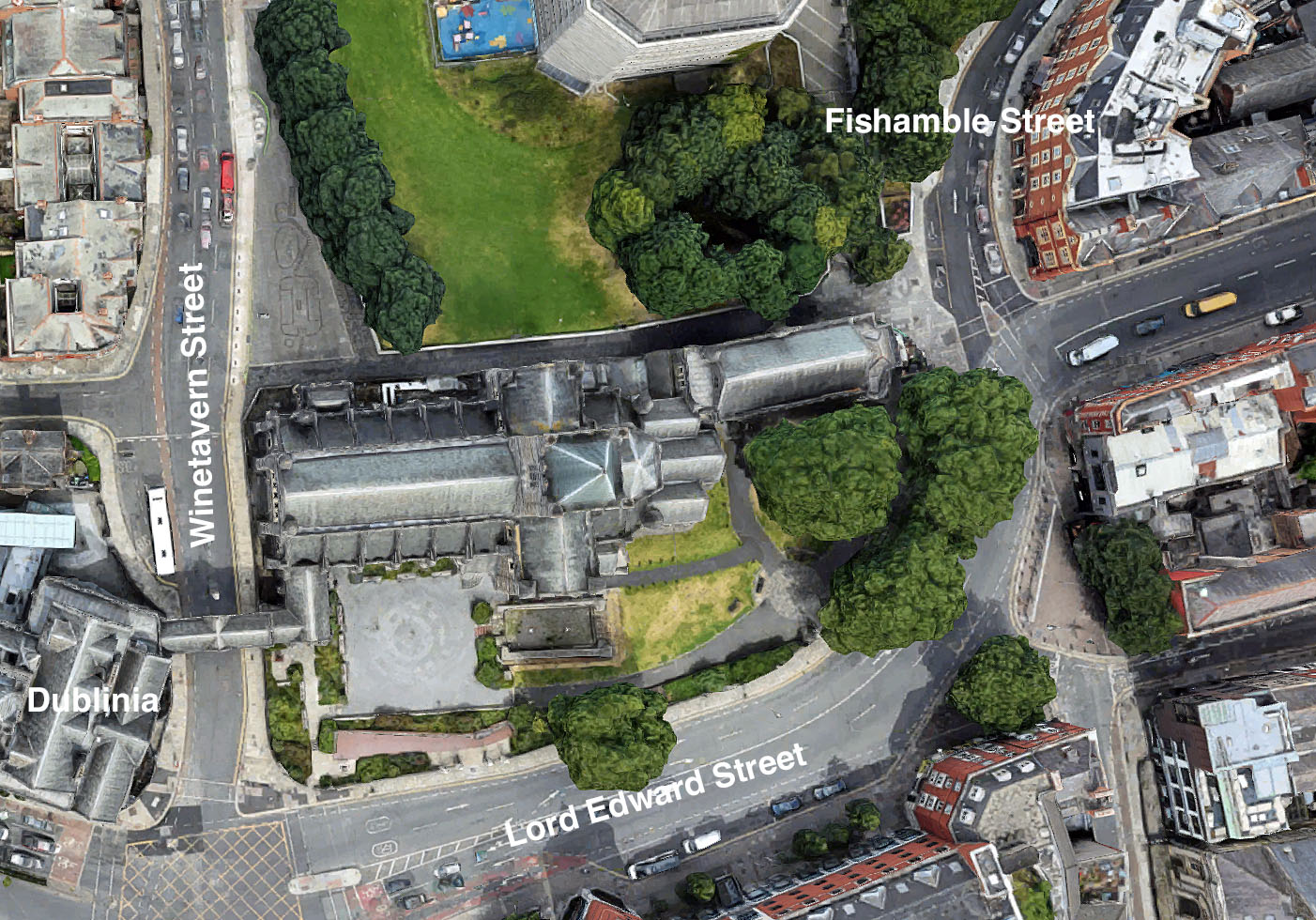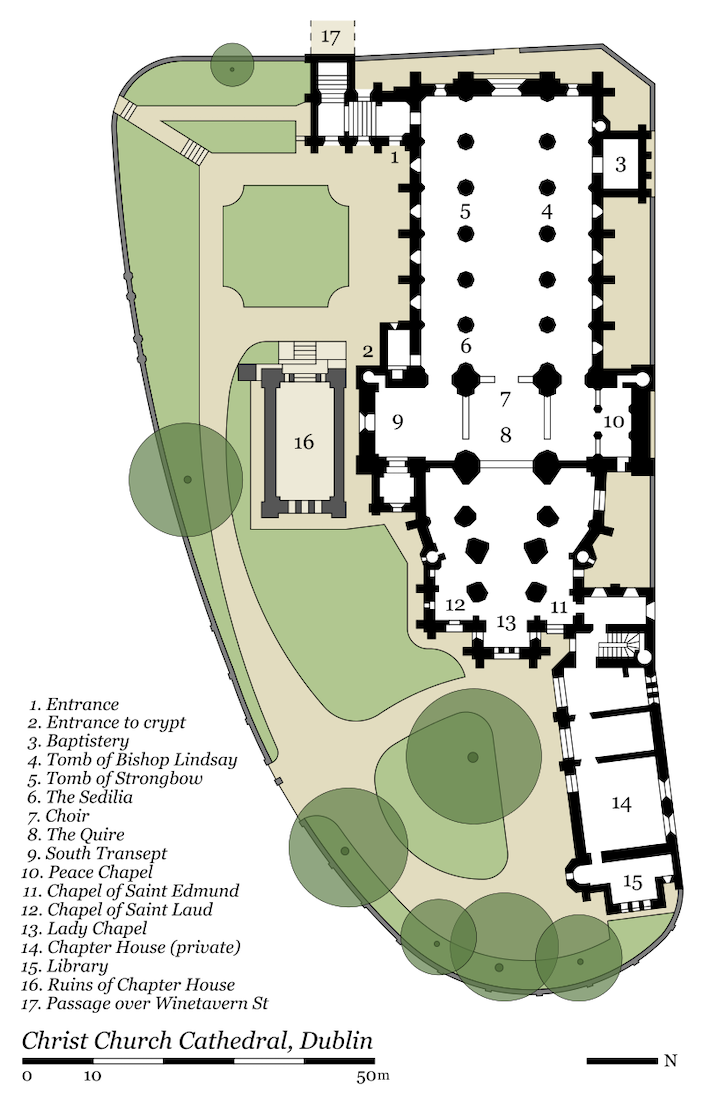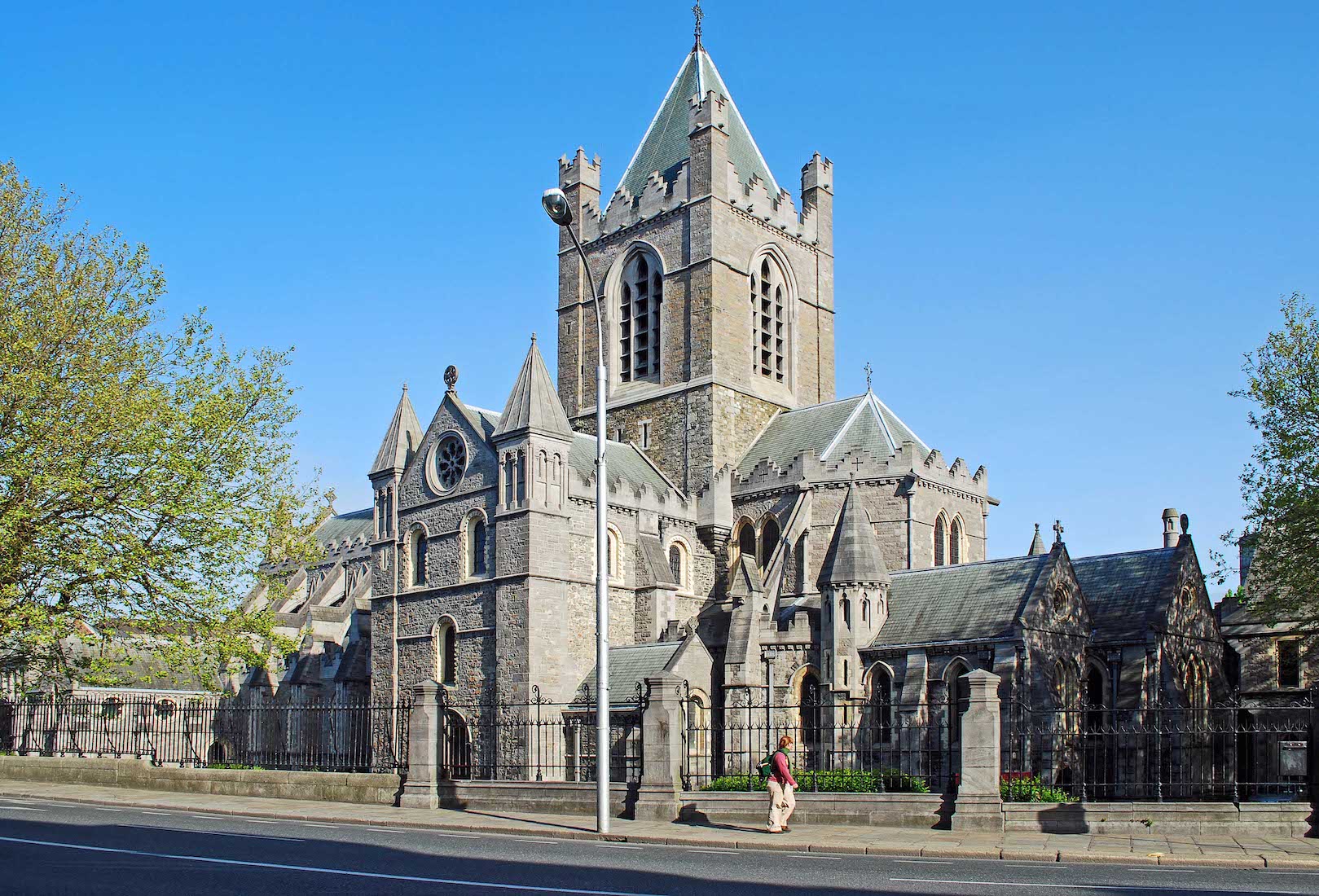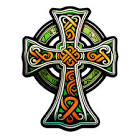This site on Christ Church Cathedral, Dublin is our first (and hopefully not the last!) website on Irish cathedrals. The main photographic contributor to this site is ‘Le Monde1’, and I am delighted to be able to make use of these excellent photographs. Smaller numbers of photos have come from the Wikipedia contributions of Andreas F. Borchert and ManuRoquette, used under the Creative License scheme, CCL. There are also a few other accredited photos under the Creative License scheme, acknowledged in the text. The initials LM, AFB, and MR will denote our main contributors. It is a great pleasure to me to have first class photos freely available for use. Further details about our contributors and attributing initials are given in the Conclusion.
A satellite image, plan and brief history of this Cathedral are given below. However, the following set of links will allow you to freely navigate to different parts of this Cathedral.

SATELLITE VIEW
Christ Church is a delightful Cathedral in a fine setting, and with a distinctive bridge at the West end! The Cathedral is cruciform in shape, and with a central square tower.
We observe that the sanctuary is in an almost exactly easterly direction, geographically, so there is no confusion caused by identifying our geographic and liturgical directions (in which the sanctuary is ina designated Easterly direction with a capital E).
There are some excavated ruins of an old chapter house just South of the south transept, and a ‘new’ chapter house added at the Northeast corner, although we shall find this is closed to the public. There are a couple of other points of interest. North of the nave, along Winetavern Street is a paved triangular area with indications of a previous building. Again, to the South of the nave, the bordered square quadrangle area shows signs of being marked out as a labyrinth. In our (older) photos, this area shows as green lawn.
In our outside exploration, we shall begin at the Southwest corner of the property, and follow around under the bridge in a clockwise direction, finally entering the Cathedral at the Northwest corner of the quadrangle.

PLAN
The excellent official Cathedral plan is shown at left. Special features are clearly marked, but we shall follow our own route of exploration! We start at the entry [1] and have a quick look across the Synod Hall bridge [17]. We then make our way across the West wall to the baptistry [3] with its many windows. We follow down the North wall past the Bishop’s tomb [4] towards the crossing, noting the pulpit and lectern, and then look at the Peace Chapel [10]. Then around the ambulatory and chapels [11], [12] and [13], omitting the extension [14, [15] which is not open to the public. Then along the South ambulatory to the South transept [9] with its little adjoining chapel. Next West along the South nave aisle past the sedilia [6] and Strongbow tomb [5]. Finally, back to the choir[7] and high altar (towards [13]), before investigating the crypt (down the steps [2]),and treasury below.
HISTORY
Wikipedia
Years Built: (11th), 12th – 19th centuries!
Address: Christchurch Place, Wood Quay, Dublin 8 Ireland
Christ Church Cathedral, more formally The Cathedral of the Holy Trinity, is the cathedral of the United Dioceses of Dublin and Glendalough and the cathedral of the ecclesiastical province of the United Provinces of Dublin and Cashel in the (Anglican) Church of Ireland. It is situated in Dublin, Ireland, and is the older of the capital city’s two medieval cathedrals, the other being St Patrick’s Cathedral.
The cathedral was founded in the early 11th century under the Viking king Sitric Silkenbeard. It was rebuilt in stone in the late 12th century under the Norman potentate Strongbow, and considerably enlarged in the early 13th century, using Somerset stones and craftsmen. A partial collapse in the 16th century left it in poor shape and the building was extensively renovated and rebuilt in the late 19th century, giving it the form it has today, including the tower, flying buttresses, and distinctive covered footbridge.
Christ Church is officially claimed as the seat (cathedra) of both the Church of Ireland and Roman Catholic archbishops of Dublin. In law, and in fact, it has been the cathedral of only the Church of Ireland’s Archbishop of Dublin since the Irish Reformation. Though nominally claiming Christ Church as his cathedral, the Roman Catholic Archbishop of Dublin uses St Mary’s in Marlborough Street in Dublin as his pro-cathedral (acting cathedral).
An extensive history of Christ Church Cathedral can be fund at ...
https://en.wikipedia.org/wiki/Christ_Church_Cathedral,_Dublin



